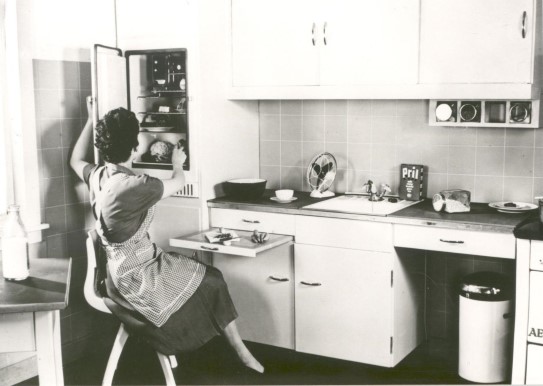
The first Frankfurt kitchen was designed in 1926. The aim was to rationalise daily life – making it more efficient, more hygienic and less time consuming. Our own kitchen was produced in 1960.

About the Frankfurt Kitchen
- The kitchen purchased by the National Museum is one of a series of 10,000 installed in the Frankfurt area in the 1920s. It was designed in 1927–28 by the Austrian architect Margarete (Grete) Schütte-Lihotzky for the architect Ernst May’s residential project “Das Neue Frankfurt”.
- The prefabricated, mass-produced kitchens were installed in the Frankfurt area. The National Museum’s specimen is from the Römerstadt district.
- It was intended as a “compact domestic laboratory” that would rationalise daily life, improving efficiency and hygiene, and making kitchen work less time consuming.
- The Frankfurt kitchen replaced the traditional kitchen, which was a place for preparing food, eating, socialising, doing laundry, bathing and even sleeping.
- The design is inspired by the kitchens of restaurant cars on long-distance trains.
- The kitchen provided a model and a standard for working kitchens throughout the 20th century and right across Europe.
- Several major museums have acquired Frankfurt kitchens, including MOMA and the Victoria and Albert Museum.
All the drawers and cupboards reachable from a swivel chair
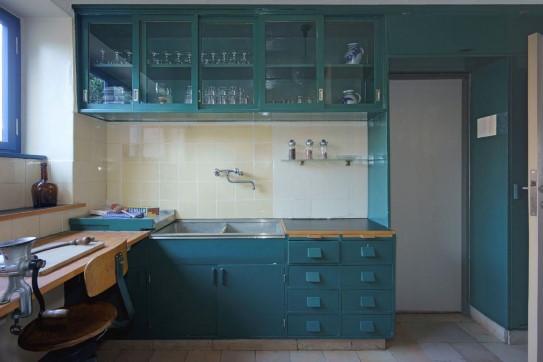
Revealing a female architect’s thoughts on domestic life in the 1920s
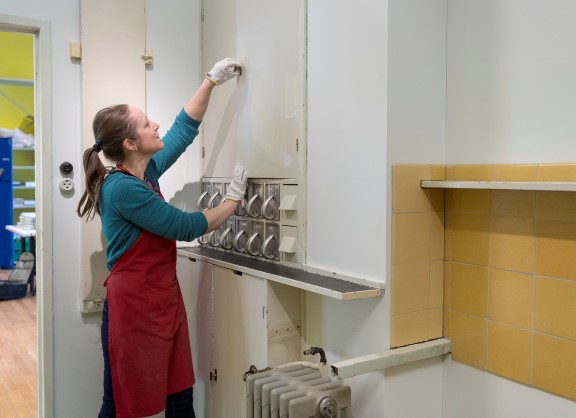
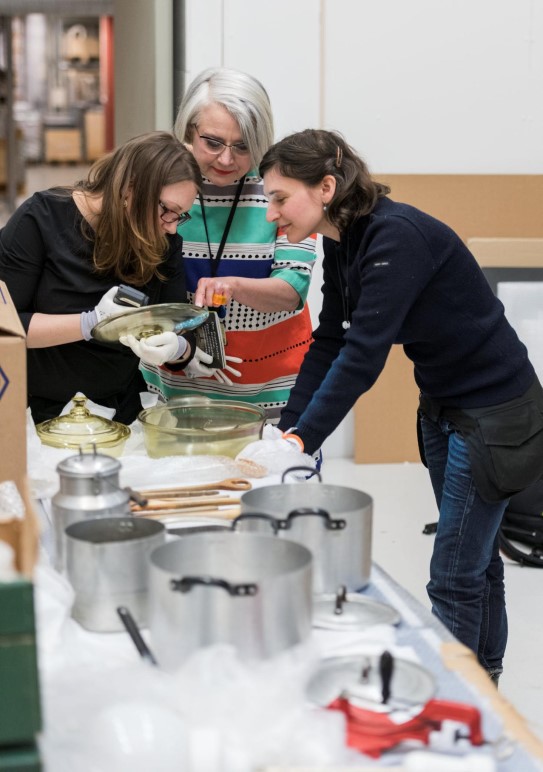
The kitchen is a large and complex object consisting of many parts made from many materials with differently treated surfaces. There are work surfaces of beech wood and linoleum, cupboards and drawers of pine and plywood, a metal sink, ceramic tiles on the floor and walls, glass, a radiator, a stove, trimmings, a window, cups, containers, and much more. A Frankfurt stool designed by Schütte-Lihotzky is also part of the interior.
“One of the main tasks in working on this kitchen has been to build up a full picture of the many component parts, what it is we actually have here and what we need to procure. An inventory of this kind helps you to understand the thing as a whole; it lets you see how things are connected and what’s missing,” says conservator Hanne Skagmo.
Should the mark left by the grinder be repaired?

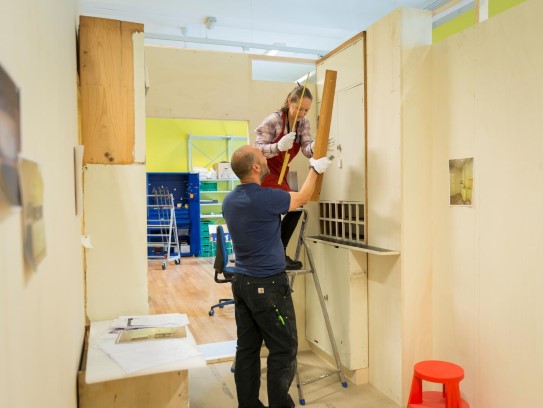
Up close in the new National Museum
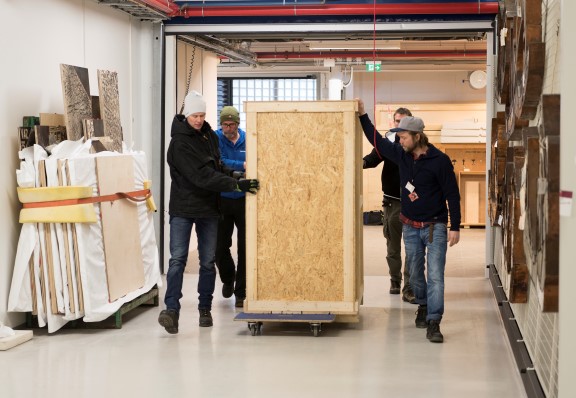
About the conservation of the Frankfurt kitchen
- Object conservator Hanne Skagmo and furniture conservator Merle Strätling have been working together to prepare the Frankfurt kitchen for display in the new National Museum.
- Karen Melching of the restoration firm Kossann & Melching in Bremen, an expert on the Frankfurt kitchen, has been a consultant to the project. She has helped find solutions and shared her experience of working on a similar project at the V&A in London.
- With the help of exhibition technician Christopher Gjerde, the kitchen has been reassembled in modules that make it easier to move and install in the new National Museum.
- For further reading, see Inger Johanne Lyngø: “Husmorens laboratorium – det funksjonalistiske kjøkkenet med eksempler fra Tyskland, Amerika, Norge og Oslo”, Byminner no. 1, 2015, 28-43 (in Norwegian only).